The University of Lincoln Summer Festival of Learning is taking place during June and July with the aim of bringing the University community together in a programme of academic, creative, wellbeing and sporting events.
The Graphic Design department is in the School of Design and is located in the Peter de Wint building. Barrie Tullett is programme leader for the Graphic Design course, and he suggested that we run a zine making workshop over a few days for students across the University as part of the Summer Festival of Learning.
A zine (pronounced zeen – abbreviation of Fanzine or magazine) is a self-published, small circulation, nonprofit making booklet usually designed, printed, and bound using ‘low end” methods such as photocopying, folding and stapling. Zines have been made since the 1930s, reaching the height of their popularity during the 1970s and 1980s. There has a been a more recent resurgence of zine making over the past ten years or so (which coincides with a renewed interest in Riso printing).
Anyone can make a zine – all you need is enthusiasm, some paper, and a method of reproduction (such as a photocopier, rubber stamping sets, stencils, typewriter, or inkjet printer). If you have access to software such as InDesign or Photoshop you could use a computer, but it’s not a necessity. In fact, the DIY aesthetics of collage, paste up and photocopying all add to the appeal of the zine.
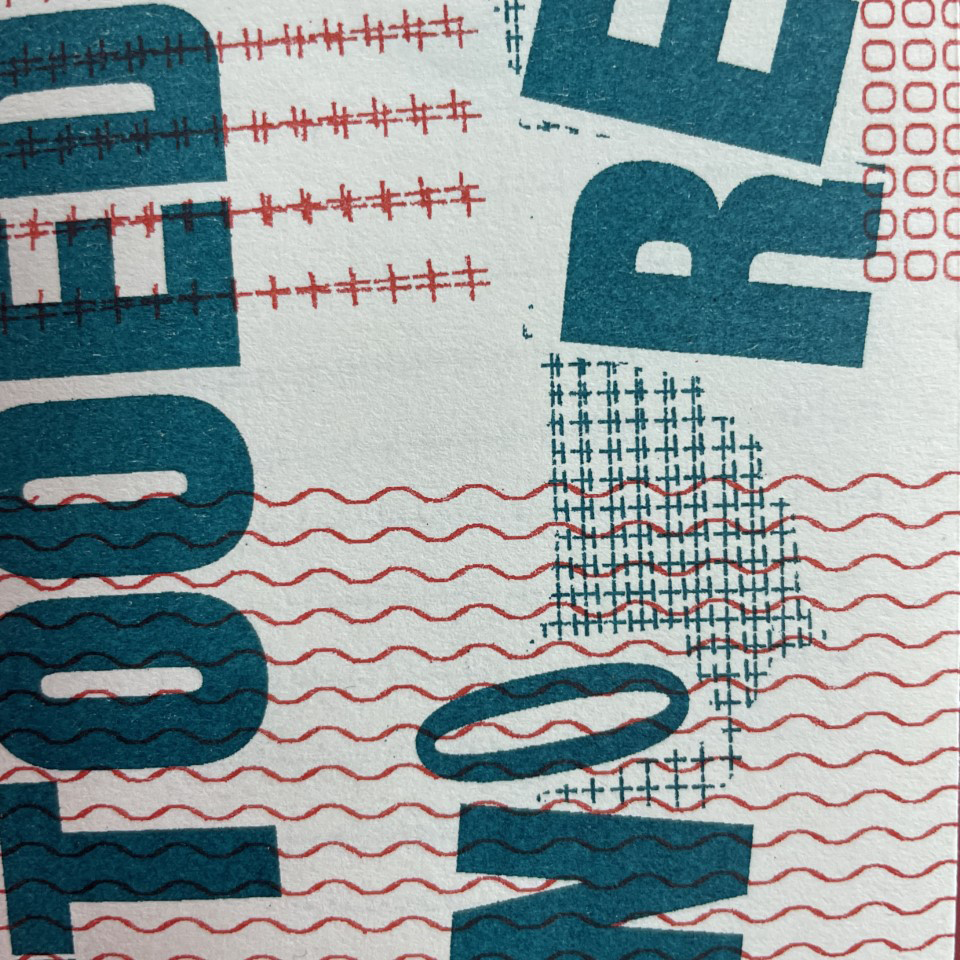
Senior lecturers Barrie and Jeremy (Jez) and technicians (Dean and Jantze) planned the workshop to take place in one of the large Graphic Design studios.
We decided to use our Risograph (Riso) printers as the main method of reproduction, as the brightly coloured soy-based inks are visually exciting, the artwork can be directly scanned (without the use of a computer, thus requiring no specialist software skills) and the printing is fast and economical. The Risograph printers were originally popular in the 1980s and were used by small organisations, charities, schools and political activists and so perfectly suit the ethos of zine making. Our three Riso printers and range of 16 colour inks are very popular and every year gain a following of enthusiastic student Risographers!
The paper was ordered (we chose an uncoated printing wove, 100gsm in off-white from Arboreta Papers for the pages and Colorplan, 175gsm from GF Smith in a range of (gorgeous) colours for the covers). Both of these papers were tried and tested and worked well with the printing method. Uncoated paper is the best paper for Riso printing as it prints and absorbs the ink well and the drying time is reduced (a single colour is printed at a time and each sheet of paper is fed through the printer several times to create two or three colour prints, with drying time needed between each colour).
We needed a range of papers that not only went through the Riso machines, but could also be folded easily and neatly by hand (using a bone folder) and could be stapled on the saddle stitcher and these two were a fine choice.
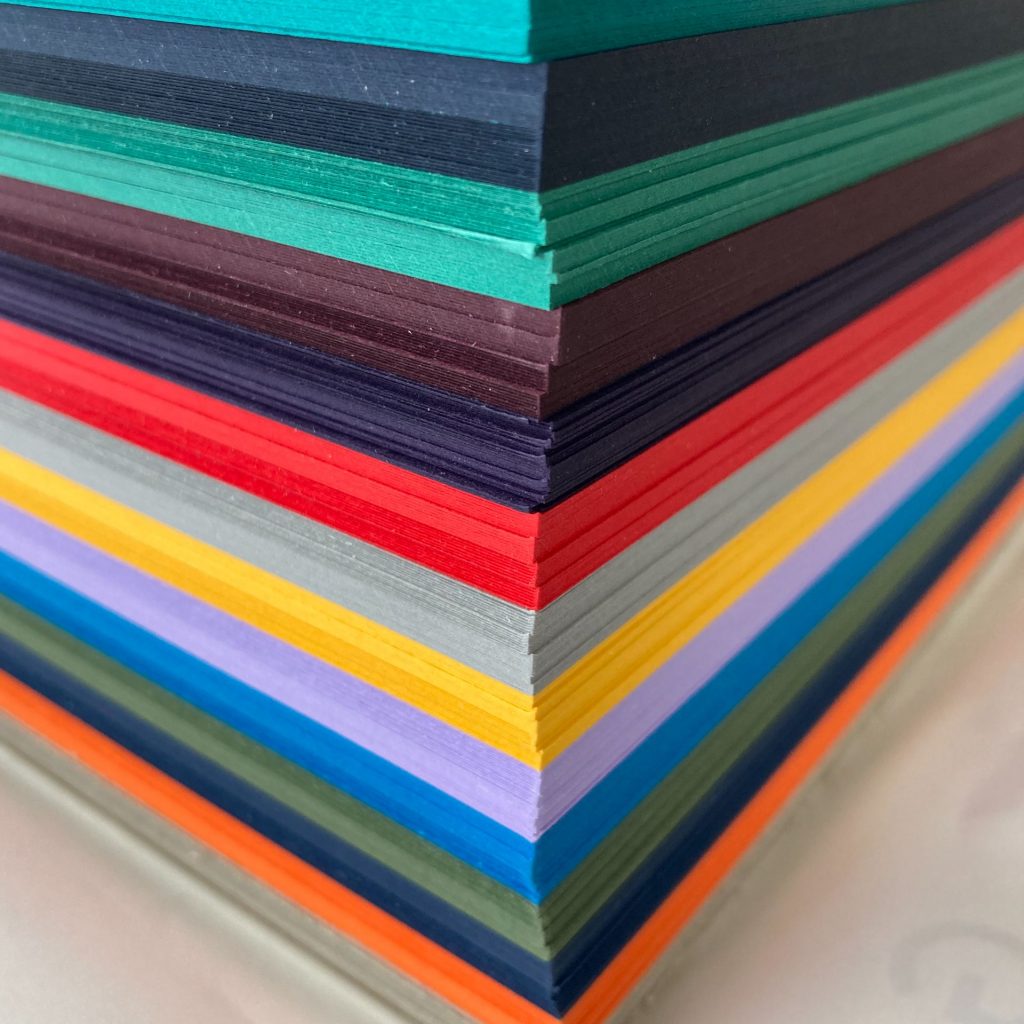
Day One
On the first day of the zine workshop, we welcomed students from Arts Foundation Year, Fashion, Animation, Photography, Illustration, Graphic Design, English, and MA Fine Art.
Barrie and Jez started with a short talk about zines, discussing why and how they were made. The Mimeograph was invented in the 1870s and used for duplicating documents right up until the 1970s (amazingly!) when it was superseded by the photocopier and then by the computer and digital printer.
This was followed by an enjoyable series of single sheet folded book exercises involving mountain /\ and valley \/ folds, numerous sheets of A3 paper, lots of dividing, measuring and cutting with scissors, to make a range of differently sized books and booklets with increasing complexity. These single sheet books are an interesting challenge and a good way to learn about imposition.
After lunch, the Technicians introduced the Risograph printers and explained how the artwork is prepared ready for printing (black and white or greyscale separations are made for each layer of colour). We talked about the colours, the order of printing, the quality of the ink (semi translucent), how to change the ink drums and choose the print settings.
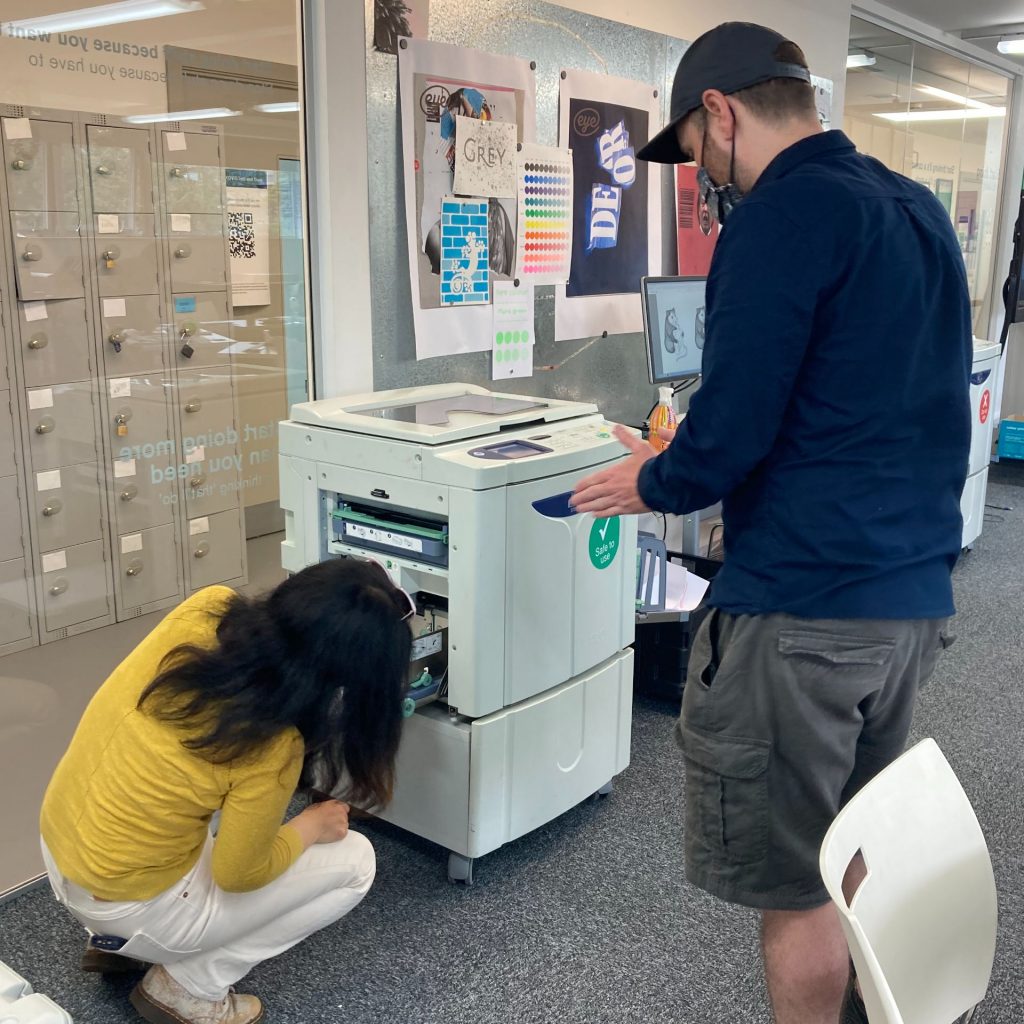
The rest of the day was spent busily making and printing sheets of type and pattern to create twenty copies of a 24pp (printed pages) collaborative zine (one each for the participants with a few copies left over). By the end of the day, the zines were collated, stapled, and trimmed on the book guillotine ready to be distributed on day two.
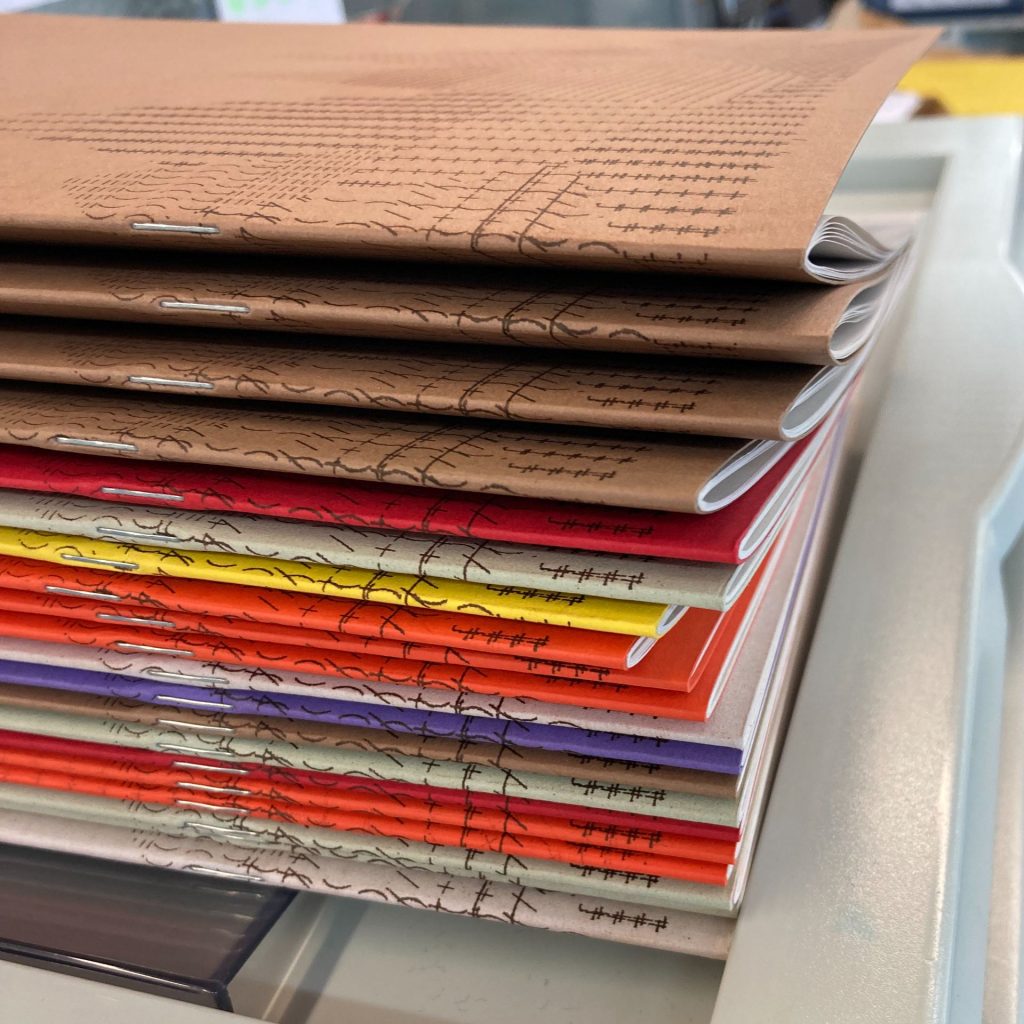
Days Two and Three
For the remainder of the zine workshop, the participants worked on their individual zines. There was a fantastic range of subject matter including ecology, transgender rights, cats, poetry, Norse mythology, and decorative animals. Artwork was created using drawing, collage, typewriters, photocopiers and digital (Photoshop). Different combinations of folding, binding and covers were used by all, and the end results were delightful and eclectic (with some finished and some unfinished – there was extra time available for those who hadn’t quite managed to complete it in the time).

The three day zine workshop was an enjoyable experience for staff and students. It was so good to work together on a creative project and we hope that everyone left feeling inspired to continue making more zines in the future.
Here are some images of the zines that were made during the three days. Thank you to the students who attended and to the staff who helped and took photos.
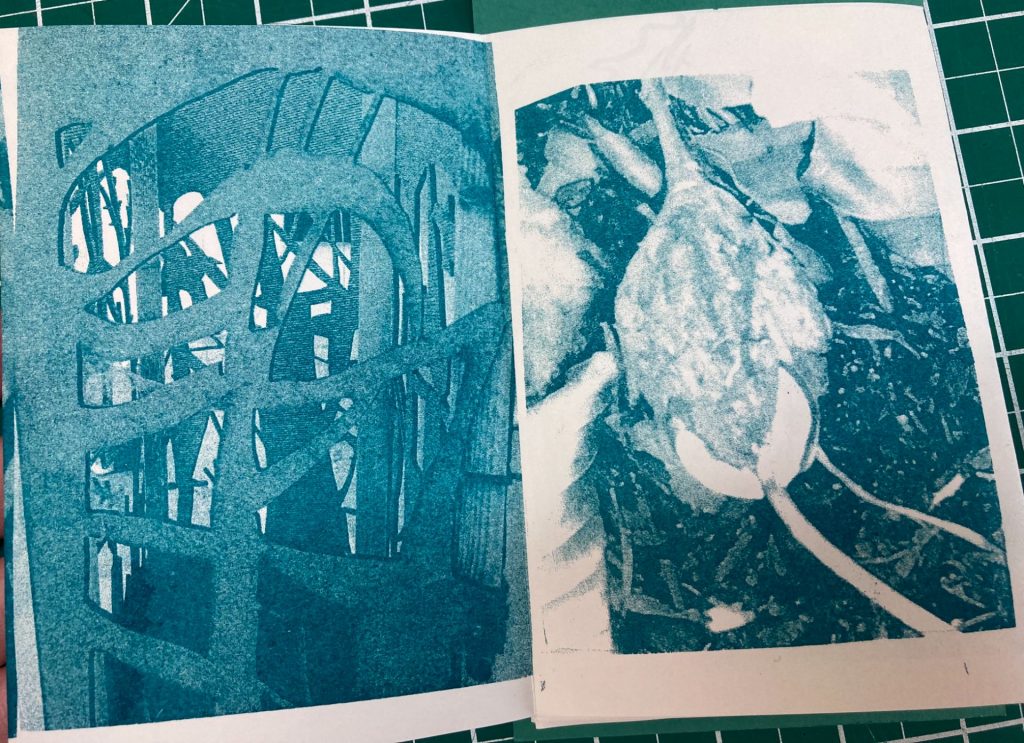


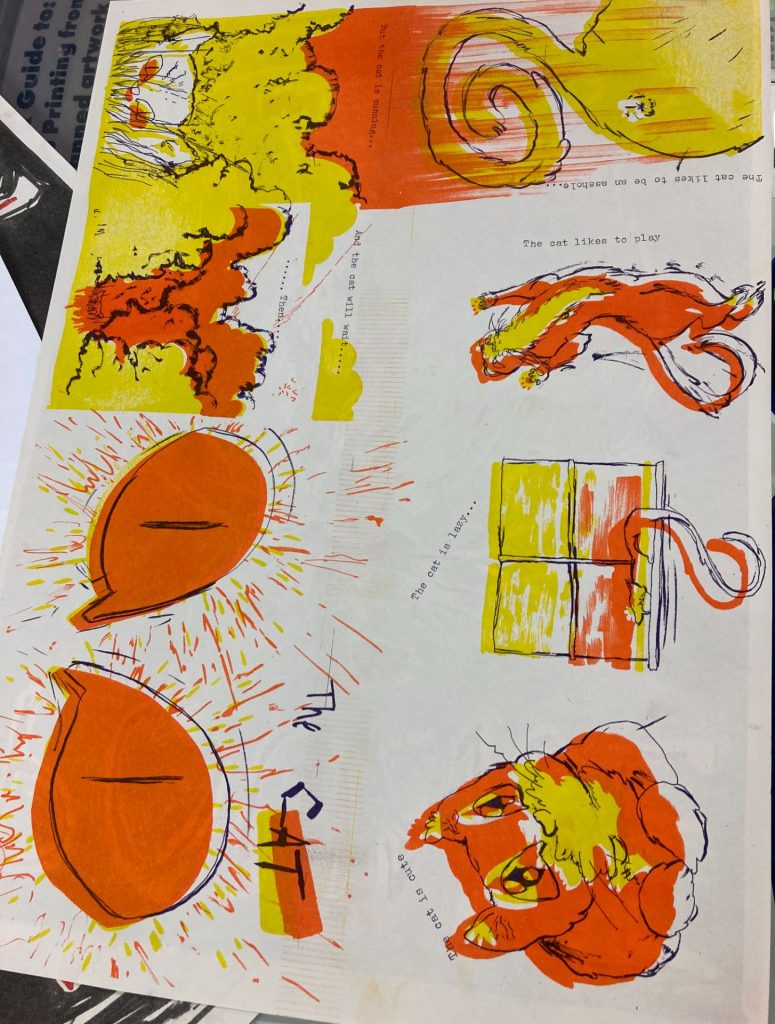

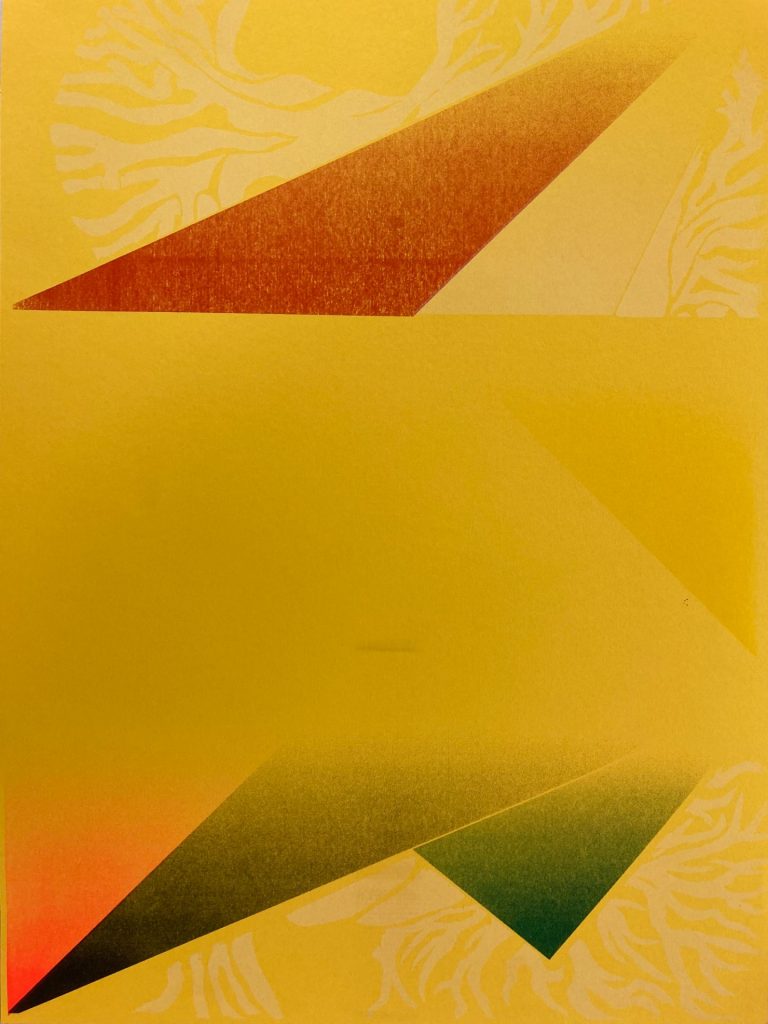
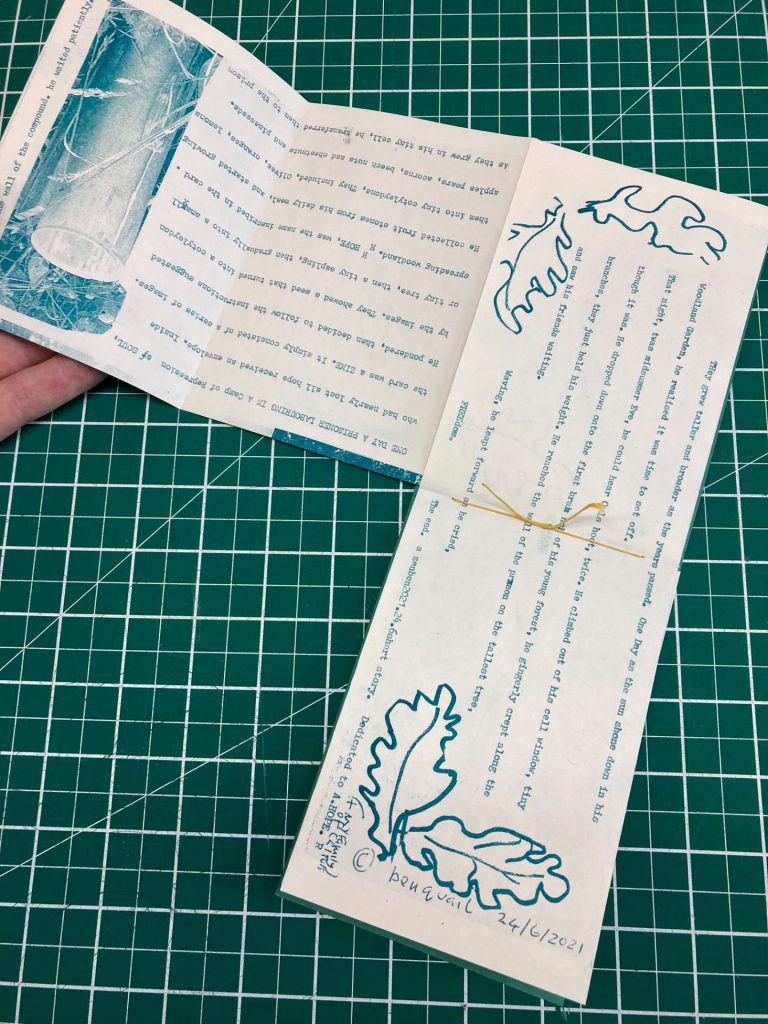
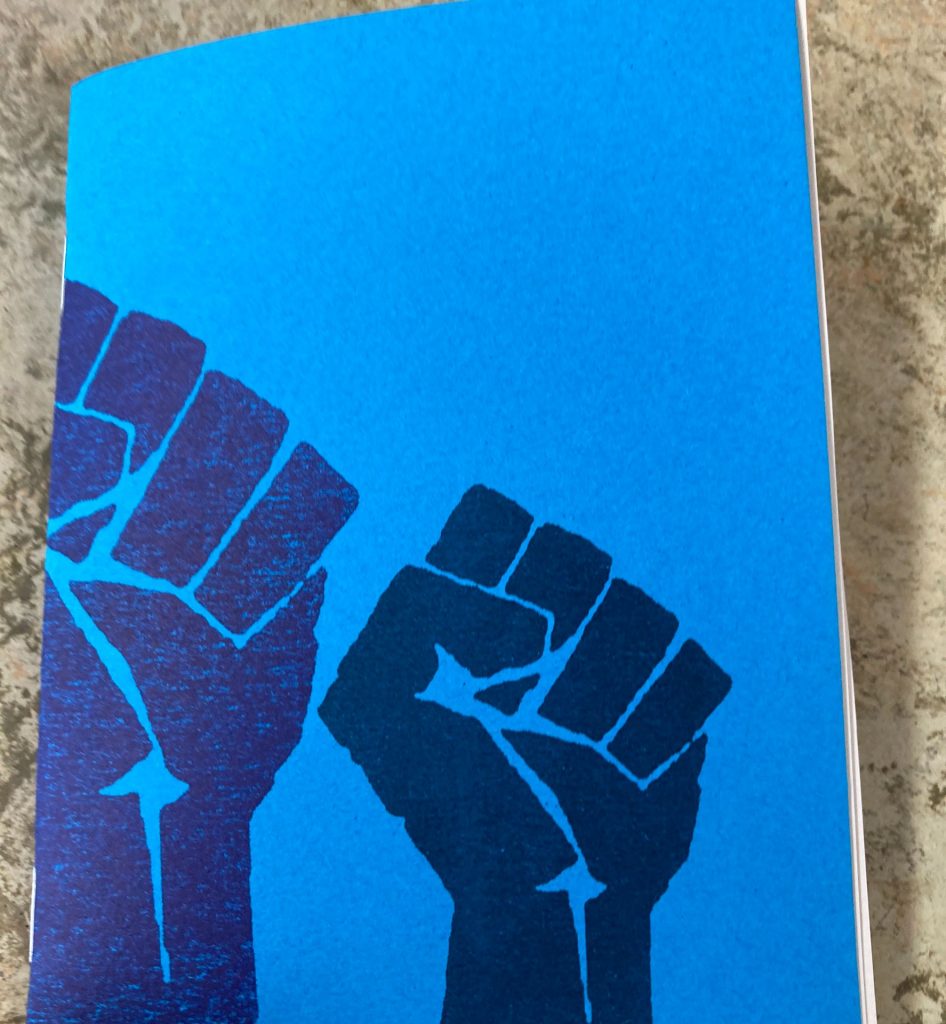



Explanation of words used:
Riso The Japanese company that produce the Risograph printers
Paste Up The pre-digital method of preparing pages for print by pasting cut-out lines of text and illustration onto a board
Mimeograph The original duplicating machine invented in the 1870s
https://en.wikipedia.org/wiki/Mimeograph
Imposition is the arrangement of printed pages on a sheet so that the page order is correct when sheets are folded and collated as a booklet or book.
https://en.wikipedia.org/wiki/Imposition
Artwork The sheet of paper (or digital file) with image or text, that is the master copy. It is used to create the stencil from which numerous copies can be made. For a multi-coloured Riso print, a separate artwork is needed for each colour (this is called a separation).

5th July 2021 at 8:11 am
thankyou very much ben look forward to more like that cheers my friends in the eco movement will be pleased to receive a real zine ,Free the trees ! roots !
5th July 2021 at 9:11 am
I’m glad you enjoyed it Ben – it was good to have you involved, thank you! And indeed, free the trees!
8th January 2024 at 9:03 am
Kudos to the Graphic Design Department at the School of Design for organizing the Zine Making workshop! The blogpost beautifully captures the essence of this three-day creative journey, showcasing the department’s commitment to fostering artistic expression and pushing the boundaries of graphic design.